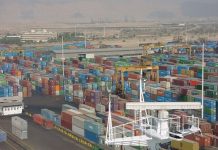ISLAMABAD: The exports of metal from Pakistan to China surged, as did the country’s imports of manufactured goods from China, WealthPK reports.
Pakistan imports more than half of its electric appliances, equipment and machinery from China. The major import items from China include nuclear power plants, high-tech industrial machinery, steel, silk and garlic.
According to the Observatory of Economic Complexity, prior to the launch of the China-Pakistan Economic Corridor (CPEC), the top destinations of Pakistan’s metal exports were Afghanistan, China, Japan, the United States, and the United Arab Emirates. However, after the launch of CPEC, Pakistan’s metal exports to China increased significantly. China now receives far more of Pakistan’s metal exports than its previous close competitors.
This spike is attributable to China’s huge investment in Pakistan through CPEC. The projects worth $64 billion, initiated under CPEC in Pakistan, also improved the country’s connectivity and energy production besides energising its mining sector, which had suffered from high transport costs, low investment and inadequate infrastructure in the past.
Among the metals, more intensely pulled in by Beijing’s new magnetism, is copper. In 2014, Pakistan exported copper worth $50 million to China. In 2020, the volume of copper exports reached $410 million.
Intriguingly, as to machines and electronics, it is observed that while China’s supply to the country has long dwarfed exports from the United States and Japan, this gap increased in the years prior to the launch of CPEC in 2016. After the launch of the mega project, China’s share plateaued at roughly 60 percent of total imports.
A glance at Pakistan’s top import sources reveals that China’s share has doubled since 2012, going from 15 percent to over 30 percent, while its rivals such as the UAE and the US remained at roughly their pre-BRI levels.
Dr Liaqat Ali Shah, the executive director and head of Policy Division – Trade and Industrial Cooperation at the Centre of Excellence for CPEC, said that electronics market was initially dominated by Japanese brands, which were high in quality but expensive. He said that Chinese brands began to provide substitutes for Japanese brands at relatively low prices. China filled the gap by providing substitutes for high-priced Japanese and German products, he added.
He told WealthPK that Pakistan’s imports from China were second only to those from the United States. “Pakistan’s exports to China are only 60 percent of its imports, with a trade deficit of 40 per cent and it is expected to expand in the coming years,” he added.
It is expected that the development of transportation infrastructure through CPEC projects will promote the real estate industry of Pakistan. The real estate values along the CPEC route will also rise sharply in suburban and rural areas.






